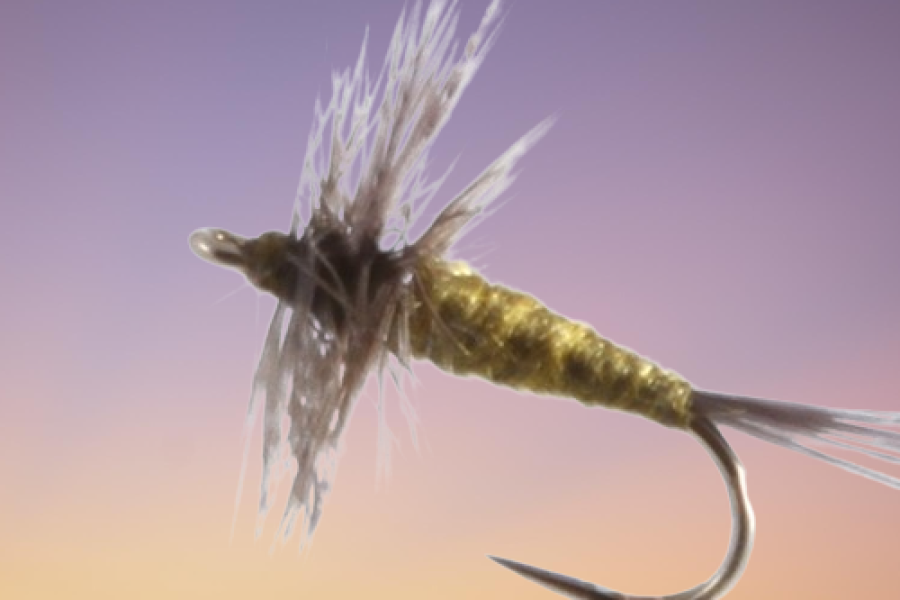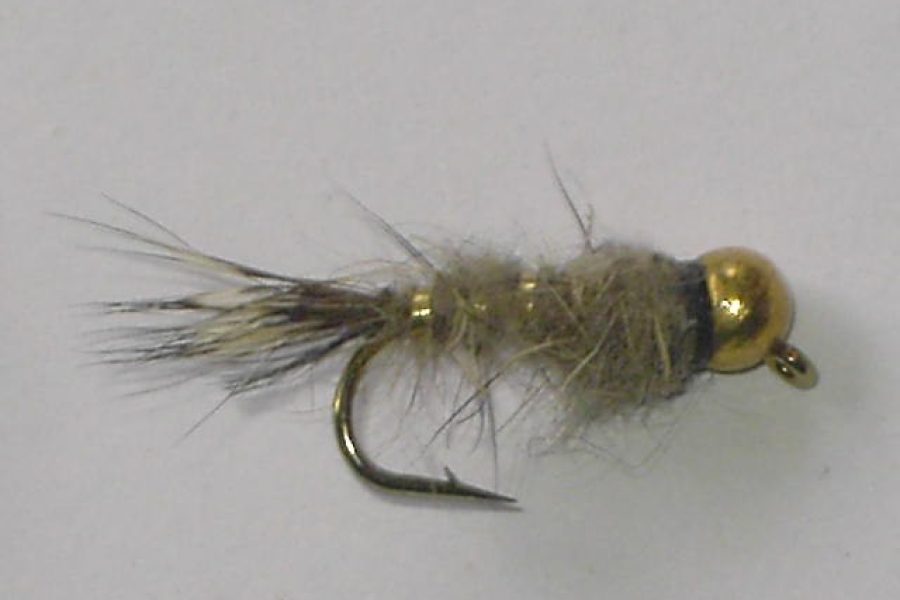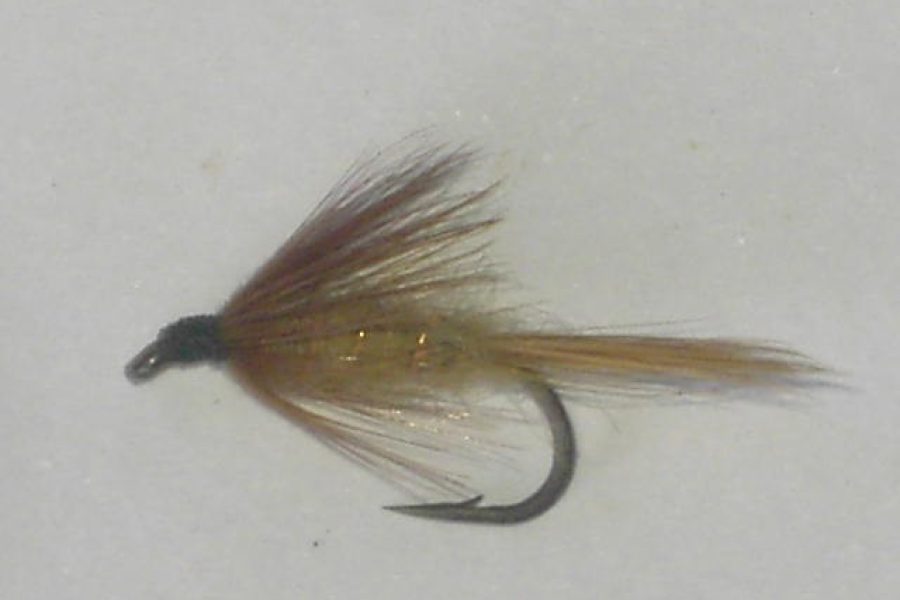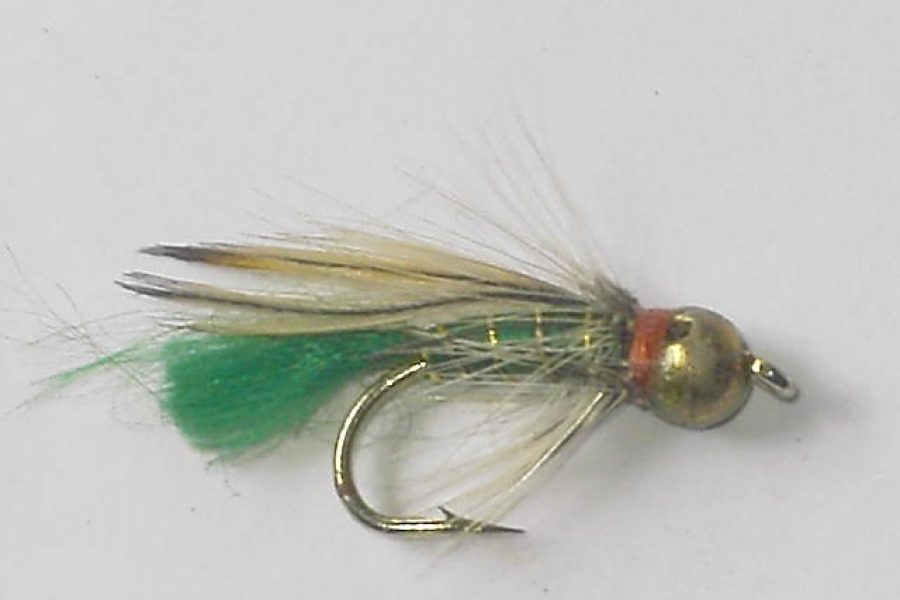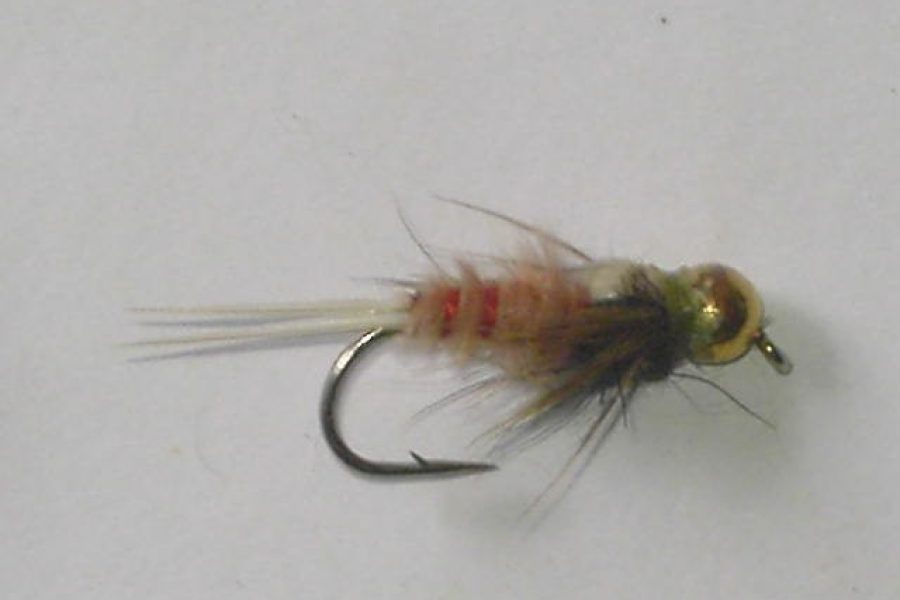Description
Product Overview and Heritage The Beadhead Hexagenia Streamer represents a specialized evolution in mayfly-inspired streamer design, featuring a weighted bead that enhances its versatility and effectiveness in deeper water. This innovative pattern combines the profile of the large Hexagenia mayfly with streamer-style materials and construction, making it particularly effective for multiple species, especially steelhead and large trout. The pattern has become a reliable producer in both rivers and lakes, consistently producing results when fish are keyed in on larger prey.
Design Features and Materials Hook Characteristics:
- Premium streamer hook
- Available sizes: 6-12
- Strong wire construction
- Wide gap design
- Chemically sharpened point
- Black nickel finish
- Optimal hook strength
- Enhanced penetration design
- Perfect size-to-weight ratio
- Freshwater durability
Material Components:
- Brass or tungsten bead
- Marabou tail
- Dubbed body
- Rubber legs
- Modern construction
- Color-fast characteristics
- Movement enhancement
- Profile consistency
- Natural appearance
- Weighted designConstruction and Tying Process The pattern’s success relies on precise construction methods:
- Balanced proportions
- Strategic bead placement
- Graduated tail tapering
- Reinforced connections
- Material integration
- Enhanced durability features
- Proper dubbing application
- Leg placement
- Profile consistency
- Movement optimization
Fishing Applications and Techniques Presentation Methods:
- Strip retrieve
- Dead drift
- Swing technique
- Depth control
- Pattern placement
- Current fishing
- Structure targeting
- Cross-current strips
- Action variation
- Traditional methods
Specialized Applications:
- Deep pools
- Fast water
- Pocket water
- Clear conditions
- Stained water
- Dawn/dusk periods
- Search pattern
- Active fish
- High-pressure situations
- Technical water
Seasonal Effectiveness Spring Performance:
- Early season success
- Pre-spawn periods
- Mixed techniques
- Weather changes
- Pattern selection
- Temperature increases
- Fish movement
- Feeding windows
- Natural cycles
- Light conditions
Summer Strategy:
- Hexagenia hatches
- Morning/evening peaks
- Temperature adaptation
- Feeding patterns
- Oxygen levels
- Light penetration
- Fish behavior
- Water conditions
- Current seams
- Structure targeting
Fall Applications:
- Pre-winter feeding
- Cooling waters
- Changed light conditions
- Transitional periods
- Aggressive takes
- Pattern visibility
- Fish location
- Temperature drops
- Migration patterns
- Feeding windows
Habitat and Water Types Water Applications:
- Rivers and streams
- Lakes and ponds
- Deep runs
- Clear water
- Turbid conditions
- Structure areas
- Current seams
- Drop-offs
- Holding water
- Pocket water
Specialized Environments:
- Various waters
- Deep channels
- Boulder pockets
- Complex currents
- Bank edges
- Channel drops
- Different streams
- Undercut banks
- Current breaks
- Fast water
Target Species and Behavior Primary Species:
- Steelhead
- Brown Trout
- Rainbow Trout
- Lake Trout
- Multiple Species
- Opportunistic Feeders
- Aggressive Predators
- Trophy Fish
Behavioral Patterns:
- Feeding response
- Aggressive takes
- Pattern recognition
- Natural behavior
- Opportunistic strikes
- Selective periods
- Strike triggers
- Visual stimulation
- Lateral line response
- Competitive behavior
Rigging Recommendations Leader Setup:
- 7.5-9 foot leaders
- 2X-4X tippet
- Tapered leaders
- Fluorocarbon options
- Loop-to-loop connections
- Proper presentation
- Adequate stiffness
- Knot strength
- Breaking strain
- Abrasion resistance
Presentation Options:
- Single fly rigs
- Multiple retrieve speeds
- Traditional methods
- Modern techniques
- Line matching
- Leader design
- Tippet selection
- Depth control
- Speed adjustment
- Action variation
Professional Applications Guide Usage:
- Client-friendly pattern
- Proven success rates
- Consistent performance
- Easy presentation
- Multiple techniques
- Teaching tool
- Confidence pattern
- Versatile applications
- Durability
- Hook-up ratio
Competition Usage:
- Tournament proven
- Technical water success
- Pressure adaptation
- Quick-change capability
- Consistent performance
- Depth control
- Pattern rotation
- Size variation
- Color selection
- Presentation options
Care and Maintenance Post-Fishing Care:
- Thorough drying
- Material grooming
- Hook inspection
- Dubbing maintenance
- Leg preservation
- Storage preparation
- Pattern inspection
- Shape verification
- Performance testing
- Movement checking
Storage Requirements:
- Dry environment
- UV protection
- Separate compartments
- Regular inspection
- Moisture prevention
- Temperature control
- Light protection
- Ventilation needs
- Box organization
- Inventory management
Advanced Fishing Methods Presentation Techniques:
- Strip variations
- Depth control
- Strike detection
- Retrieve management
- Current reading
- Structure approach
- Pattern tracking
- Recovery methods
- Angle optimization
- Speed control
Water Reading:
- Current understanding
- Depth assessment
- Structure location
- Fish holding areas
- Presentation angles
- Travel lanes
- Rest areas
- Temperature breaks
- Current seams
- Holding lies
Environmental Considerations Conservation Features:
- Sustainable materials
- Durable construction
- Catch-and-release friendly
- Minimal environmental impact
- Eco-conscious design
- Material selection
- Ethical considerations
- Resource protection
- Species conservation
- Environmental awareness
Material Selection:
- Responsible sourcing
- Quality components
- Mixed elements
- Ethical production
- Sustainable practices
- Environmental impact
- Material longevity
- Waste reduction
- Local materials
- Eco-conscious design


